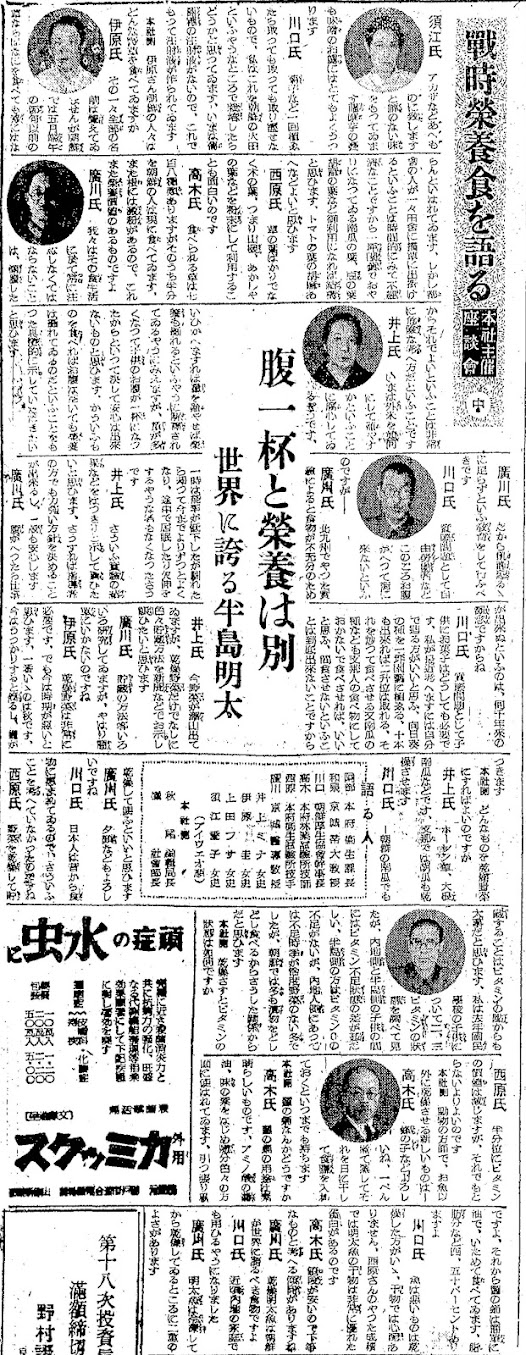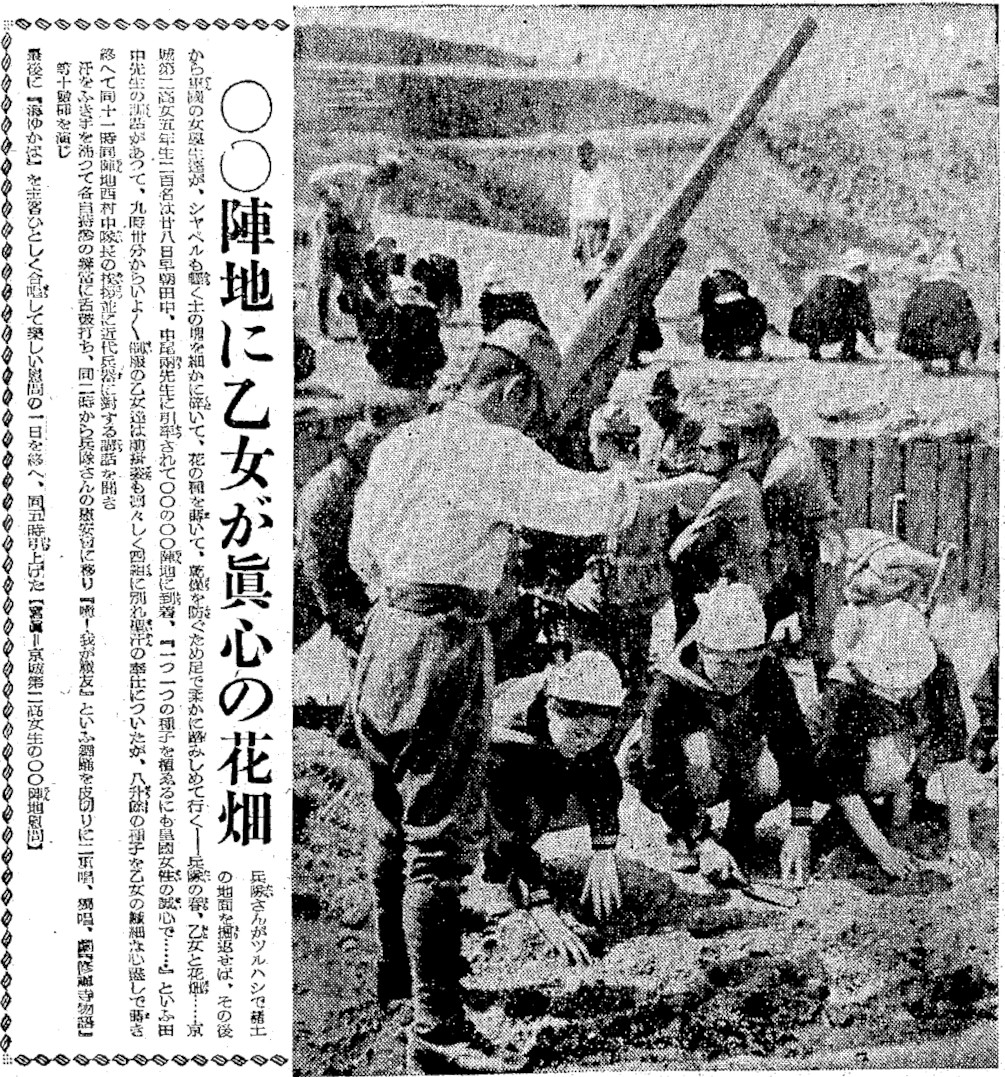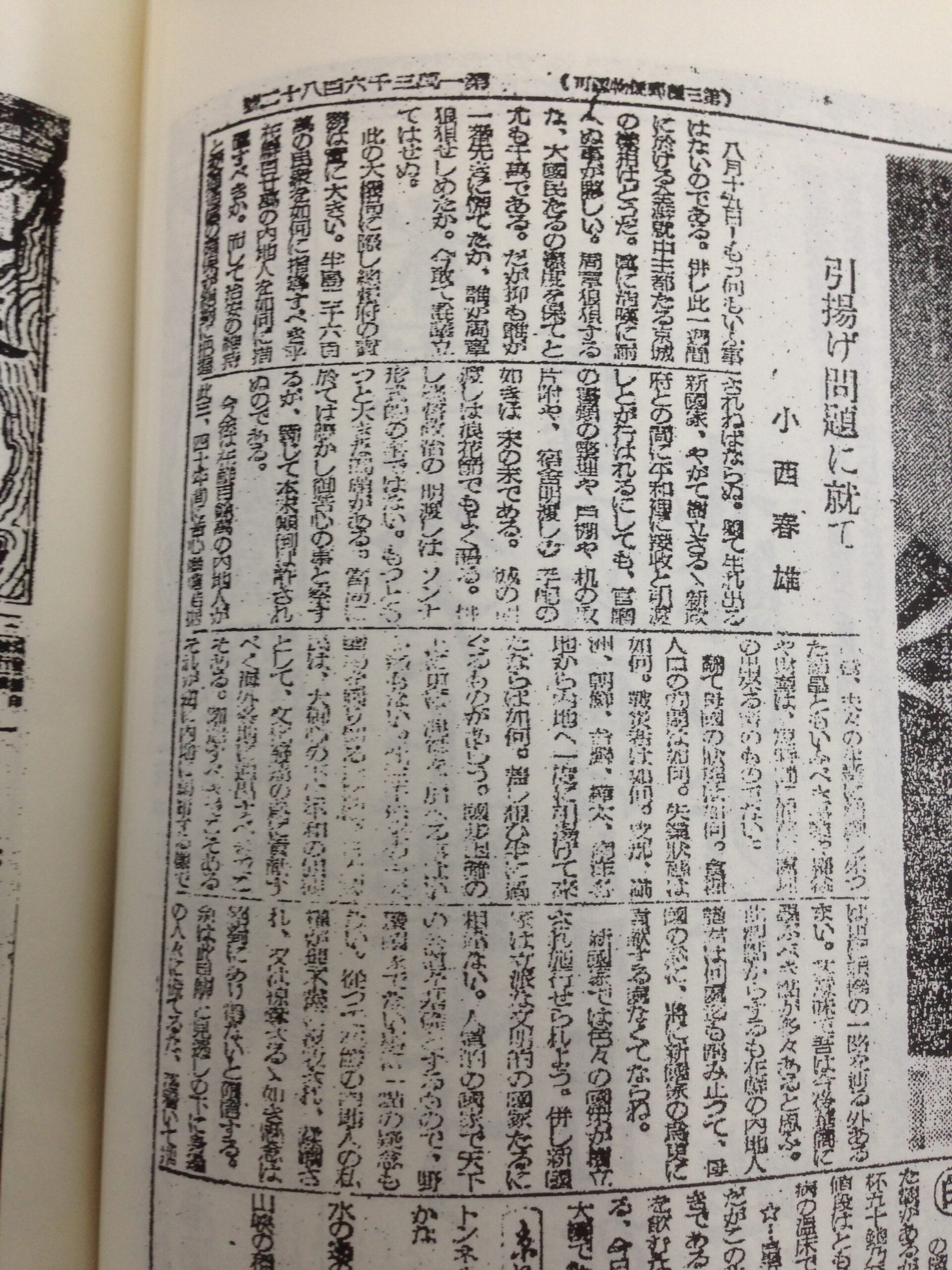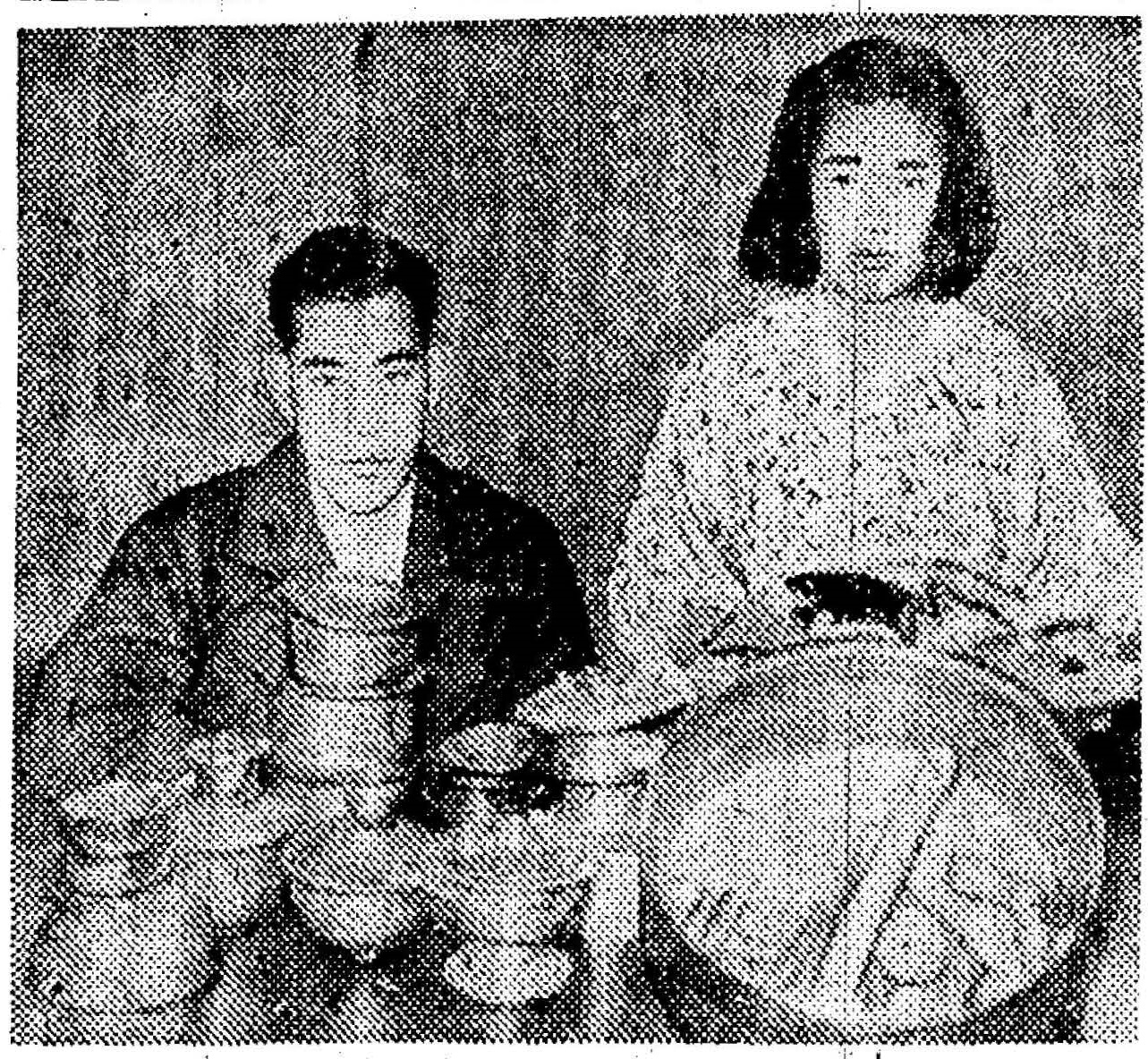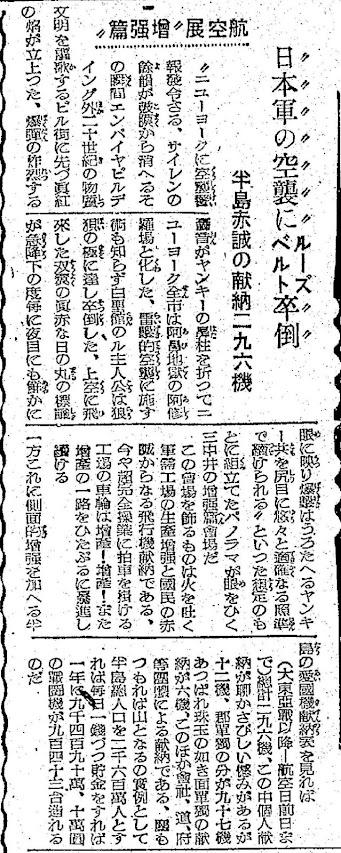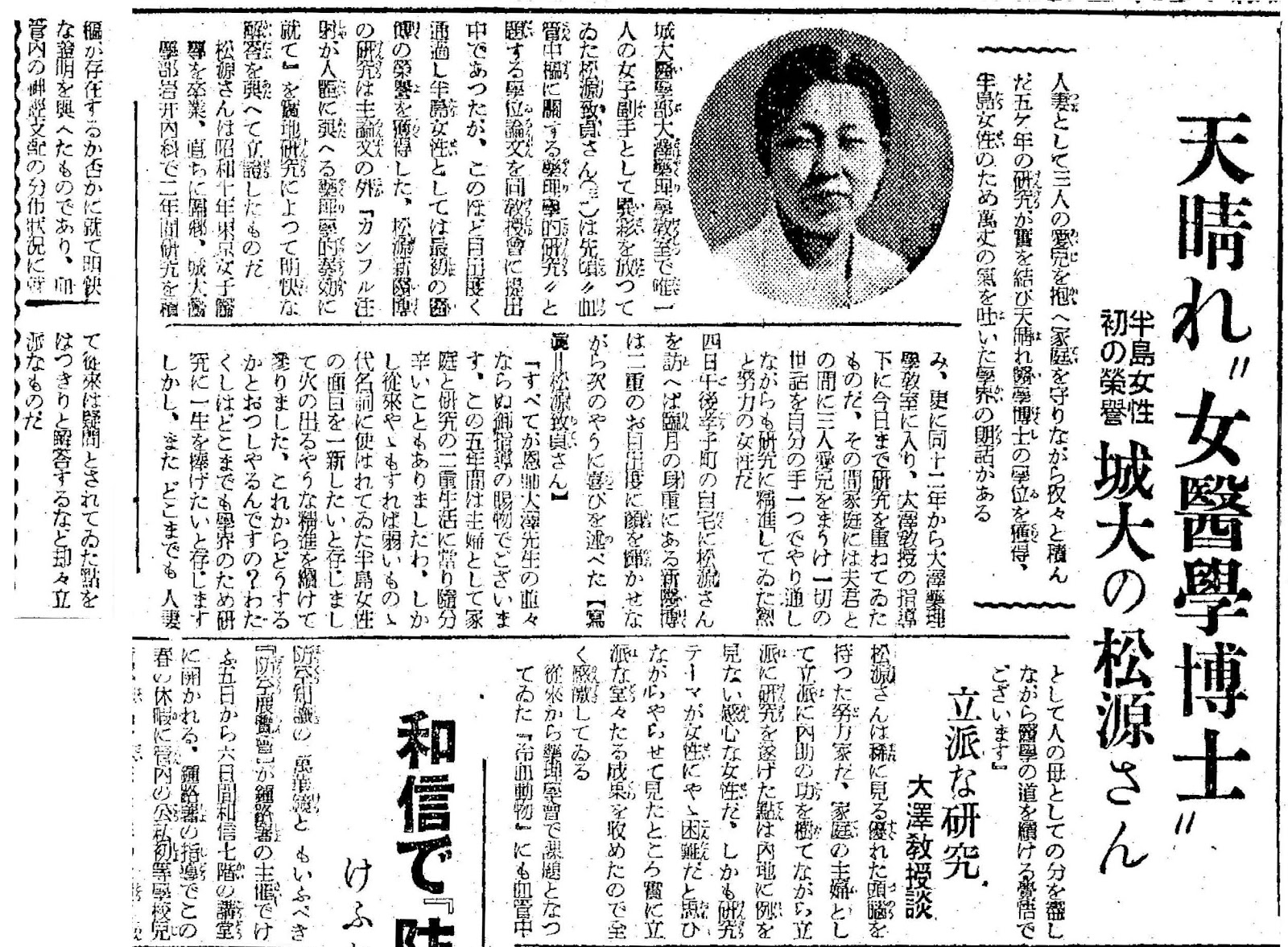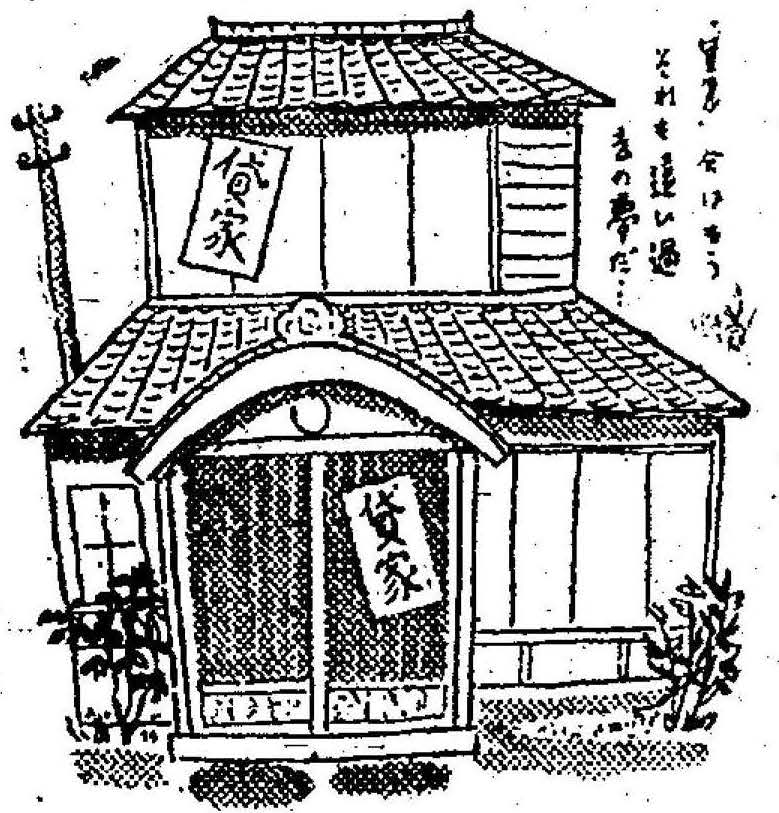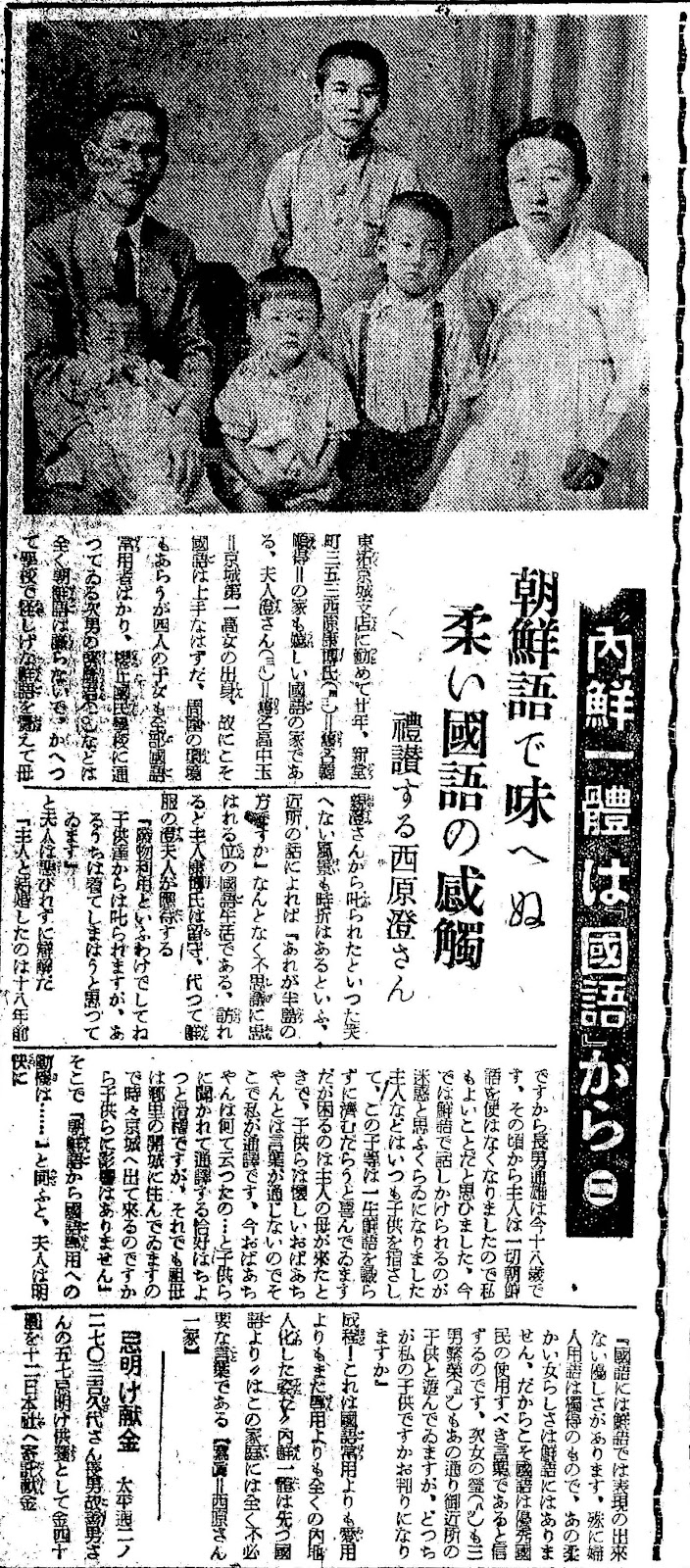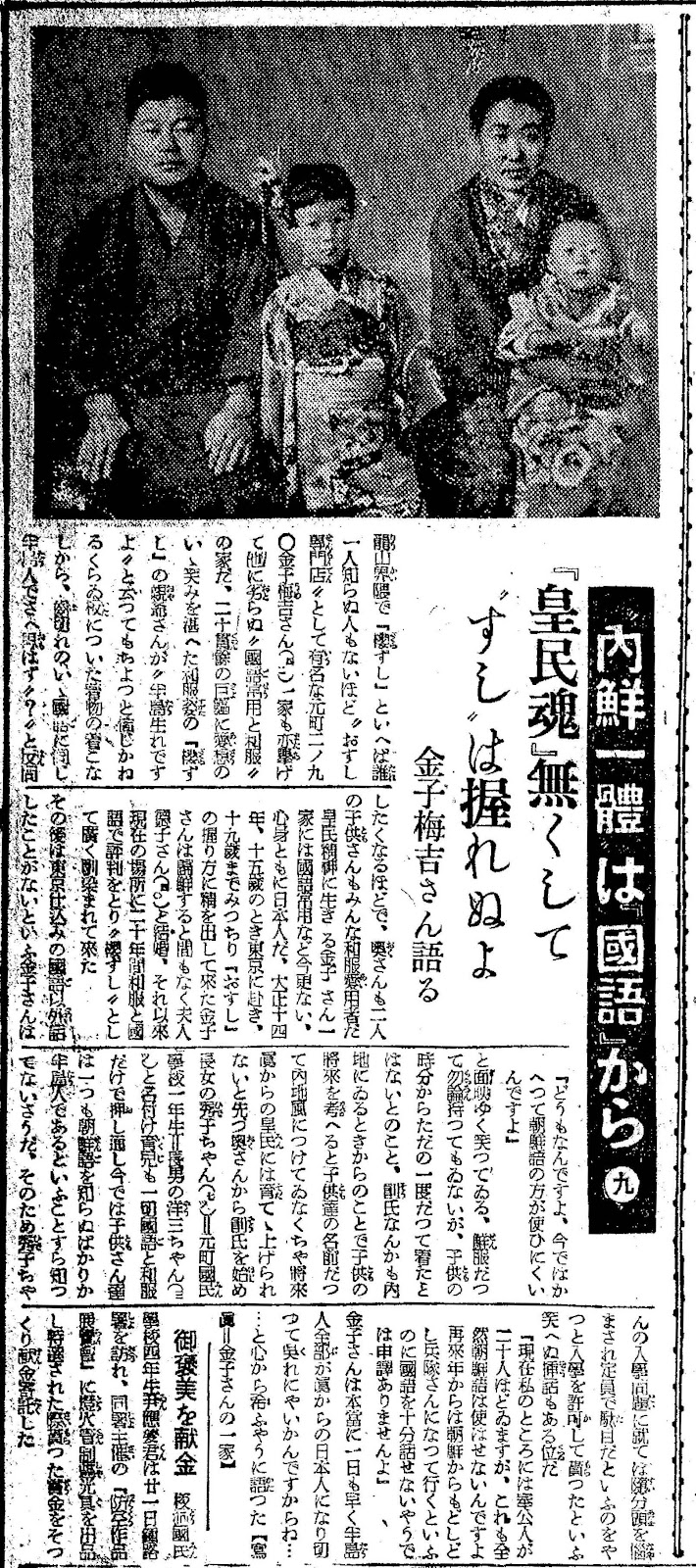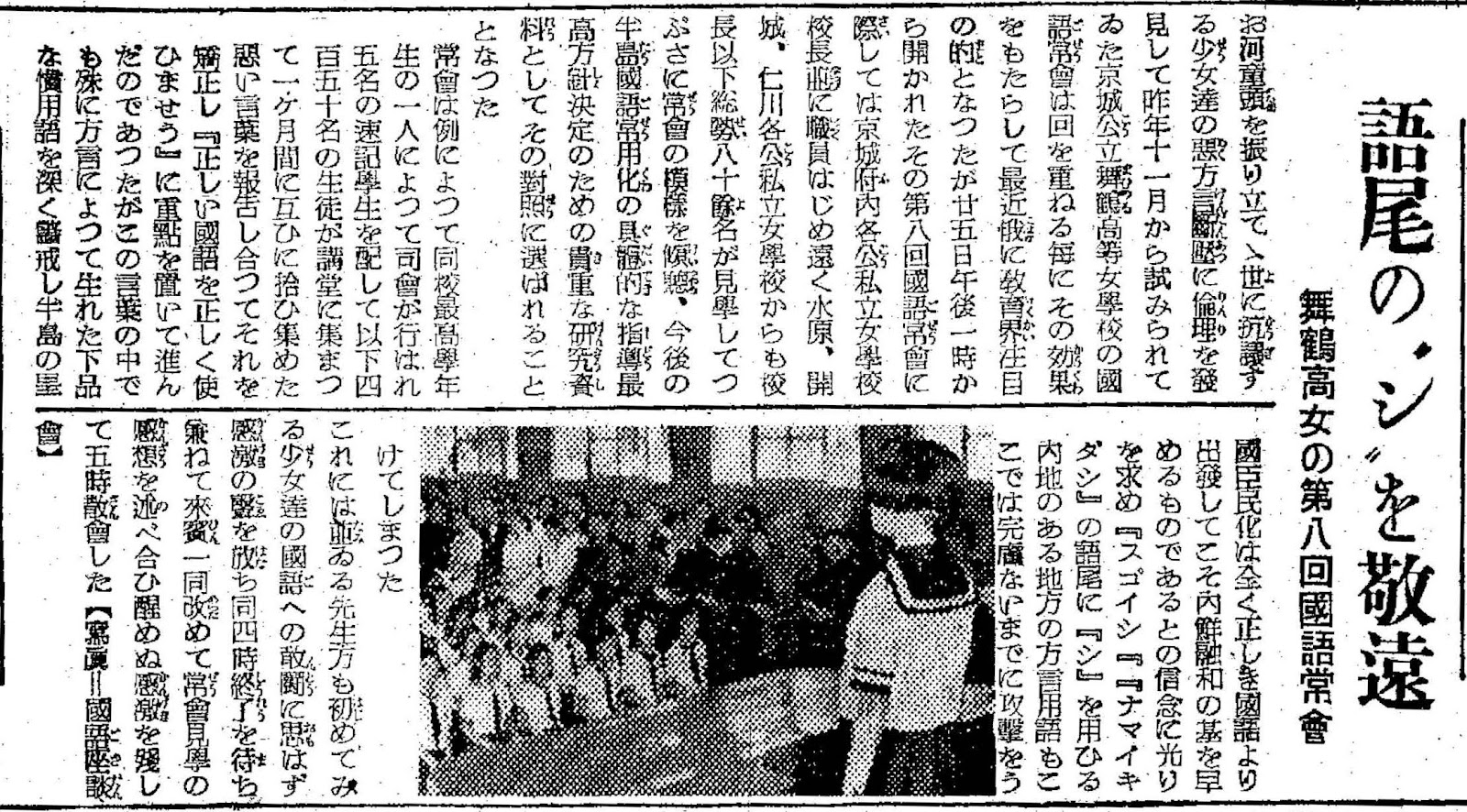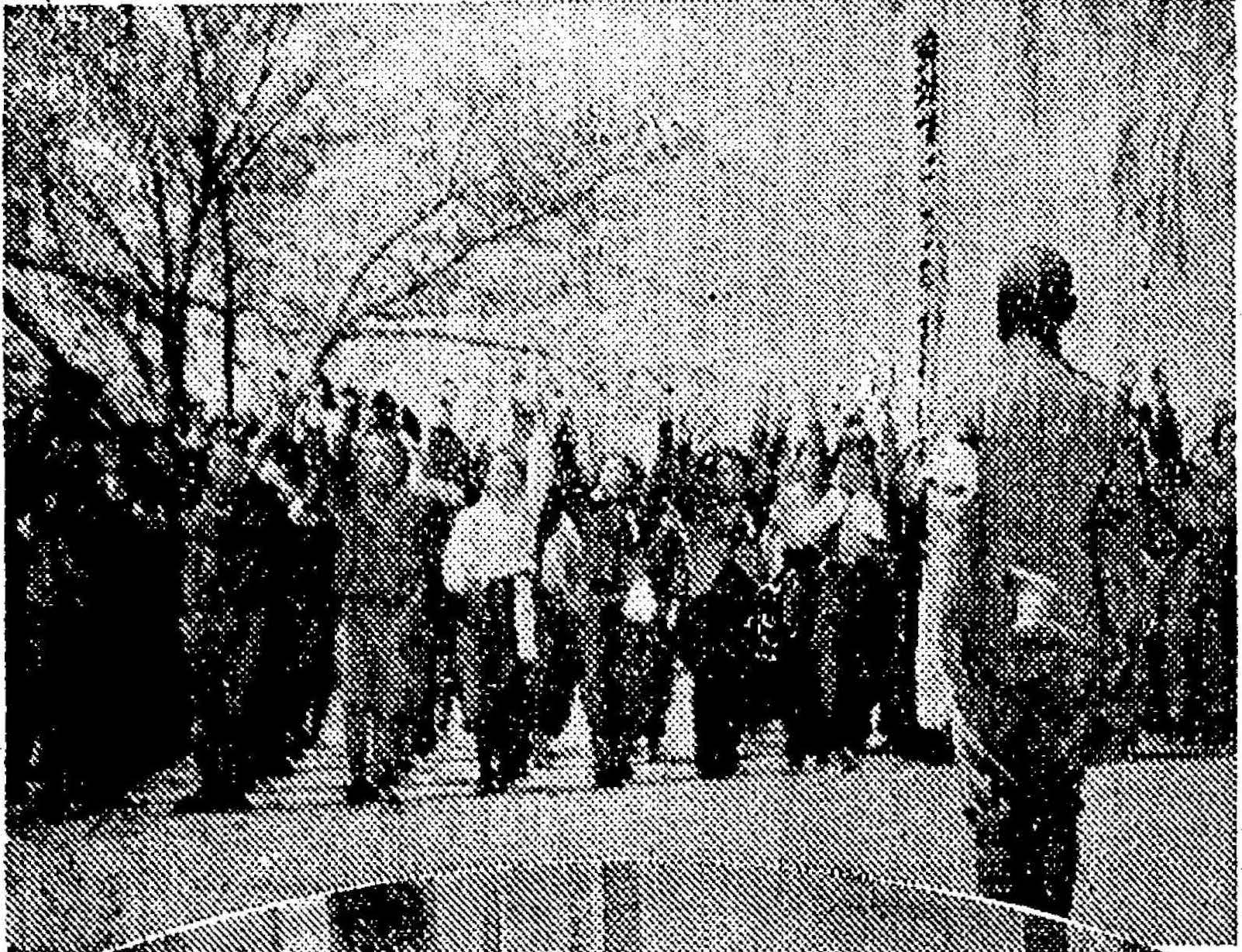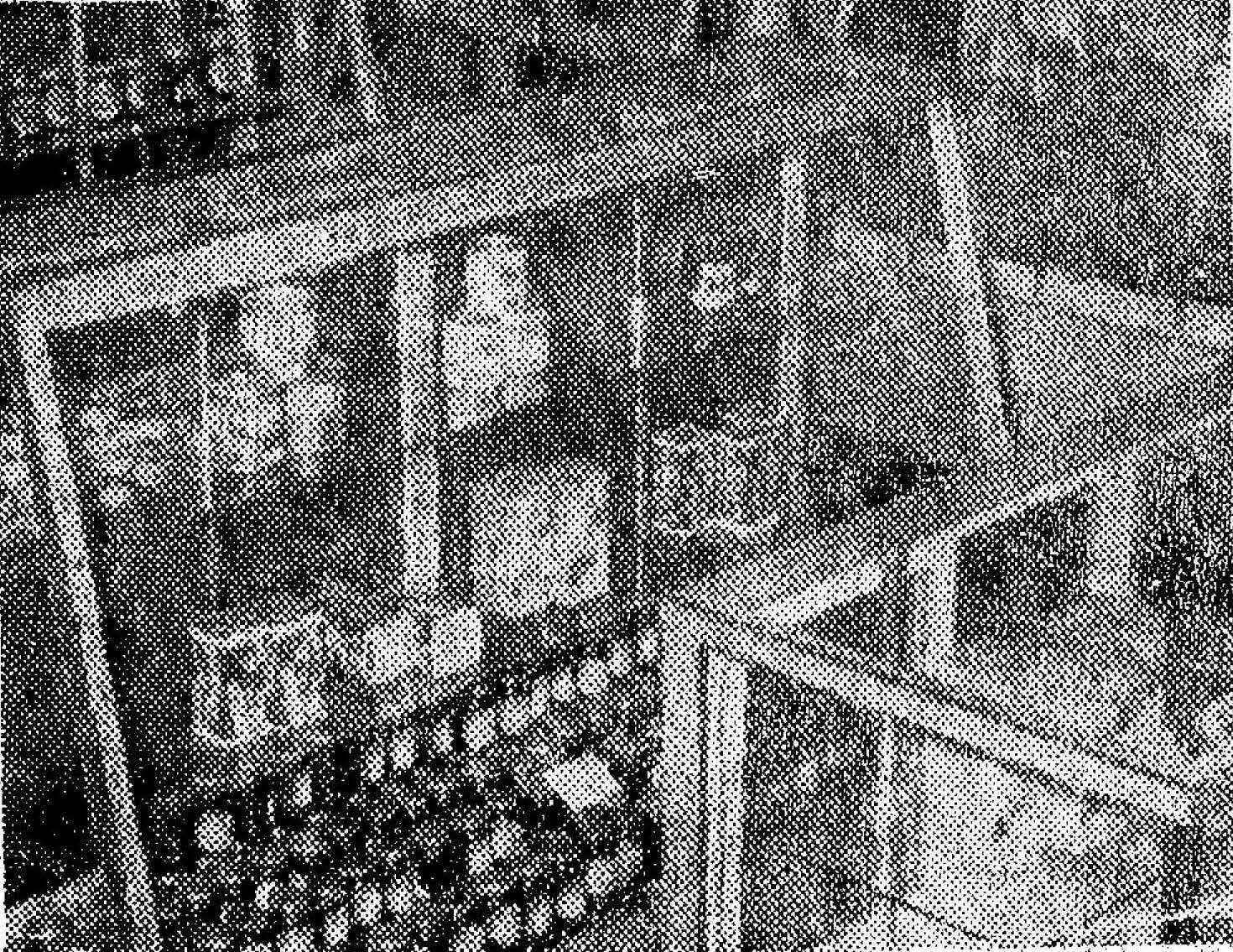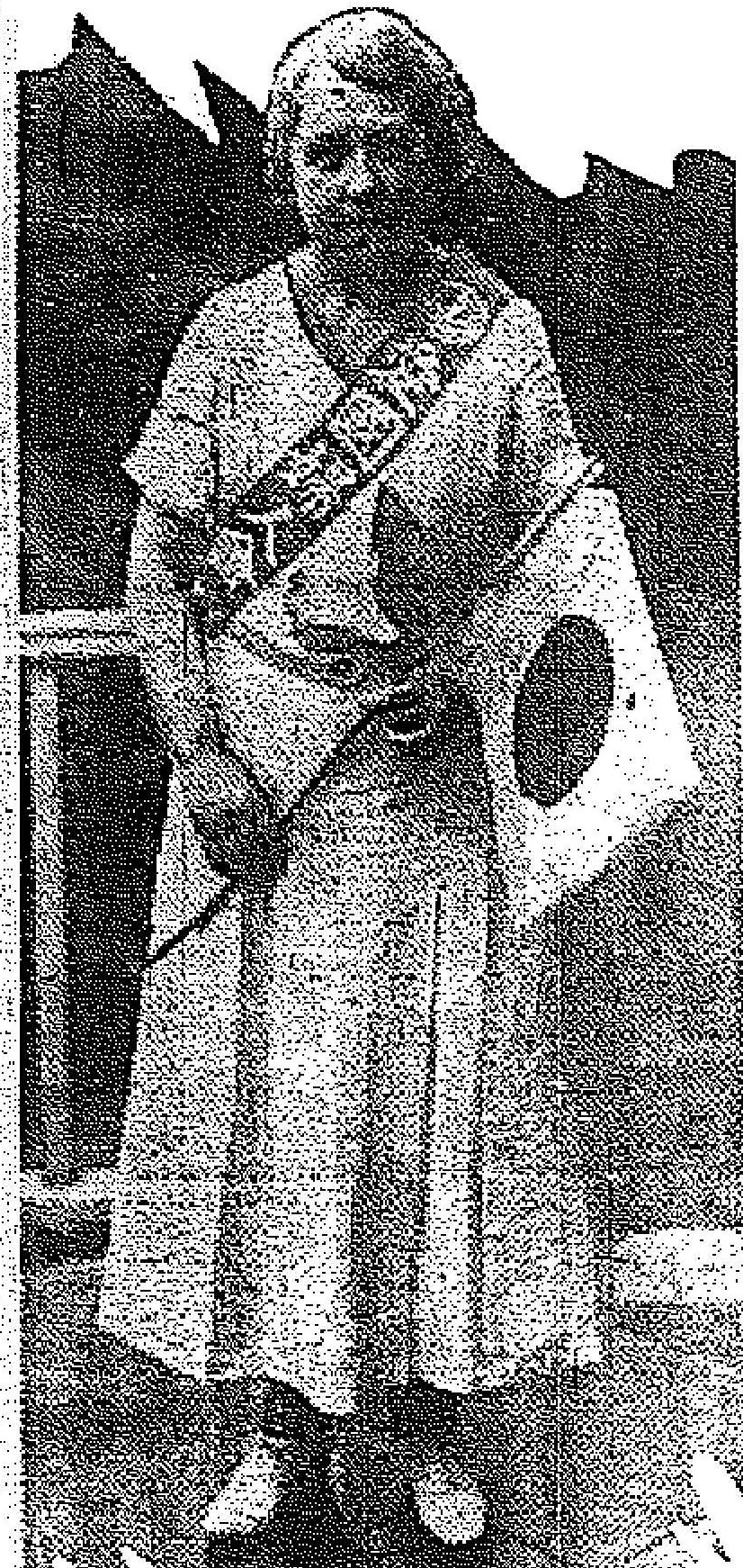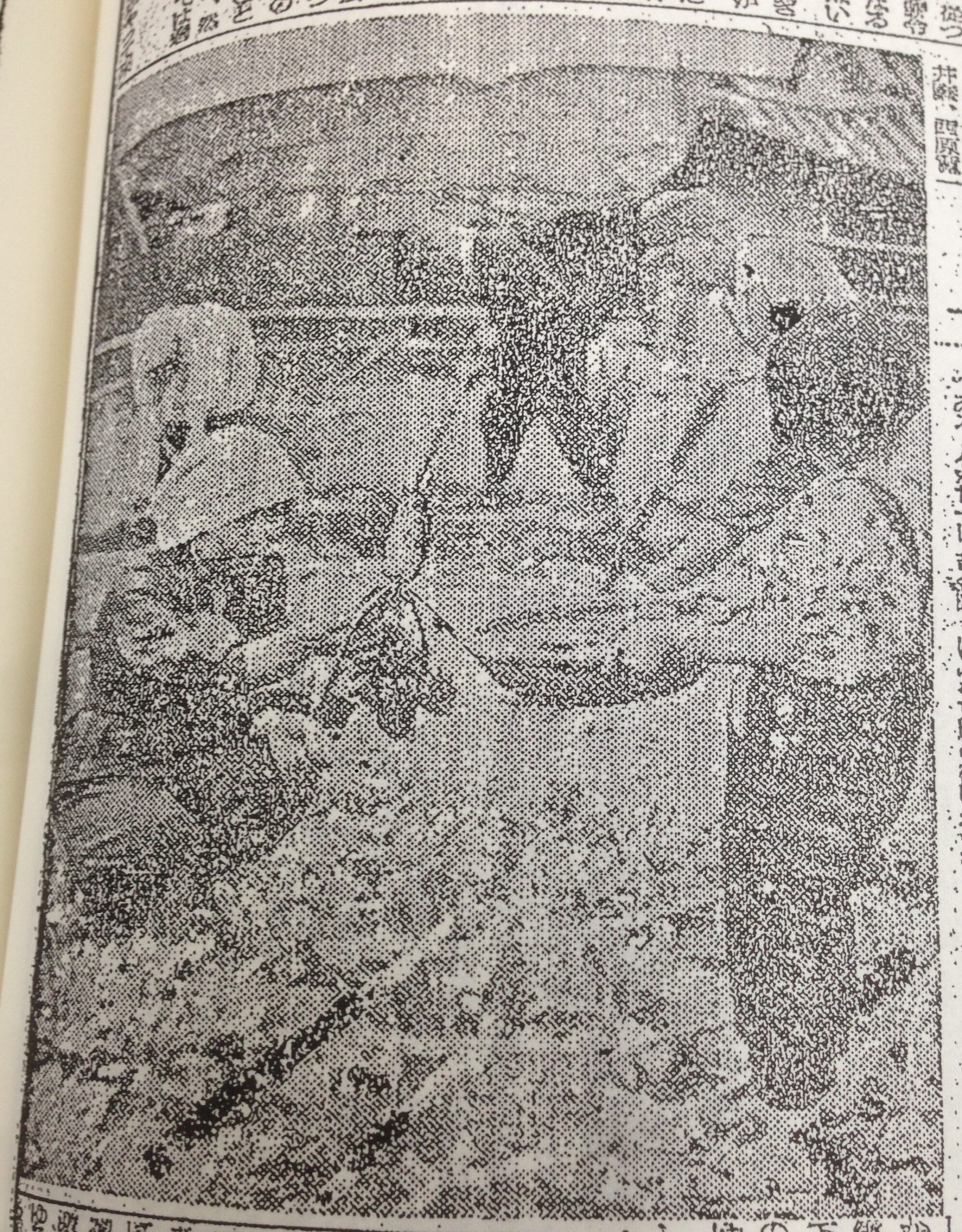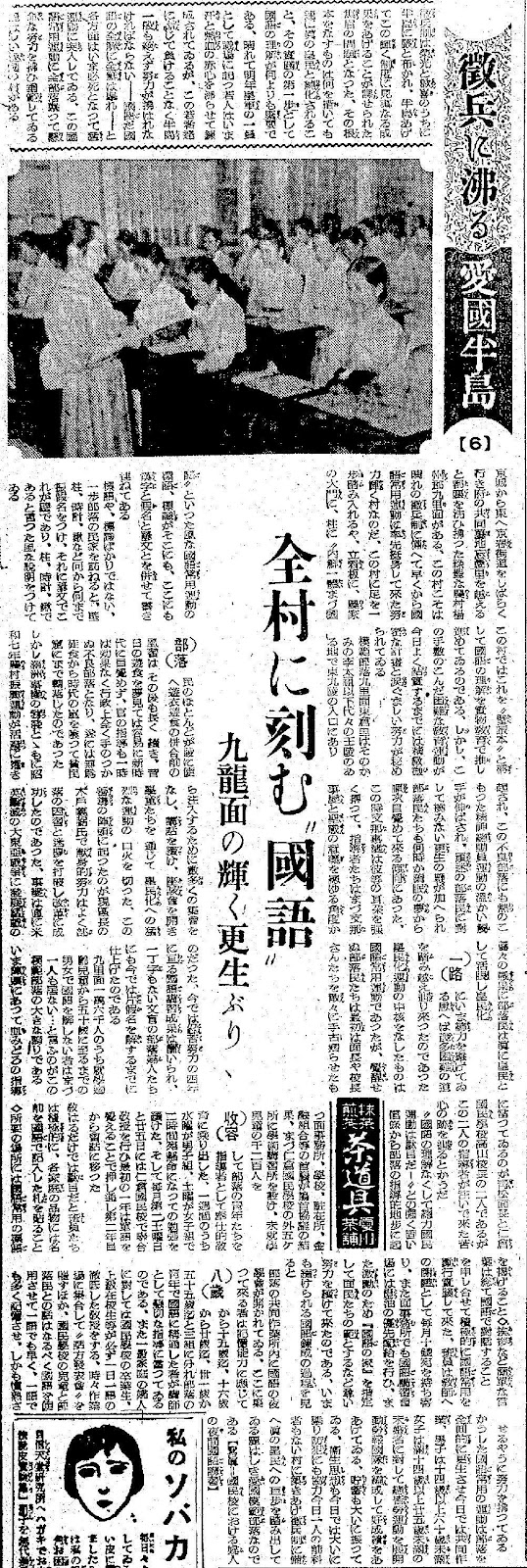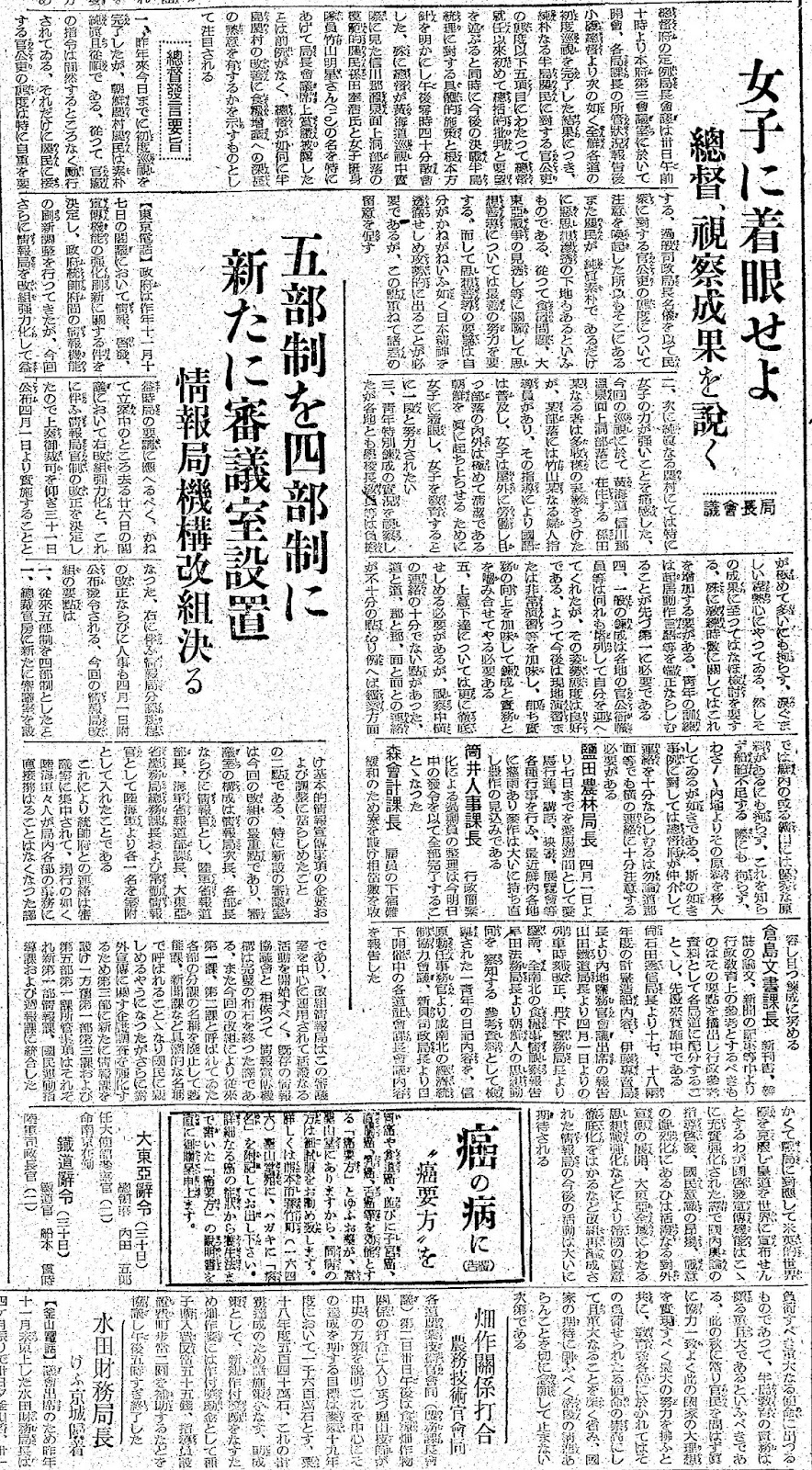How Korean numbers (하나,둘,셋…) are related to Japanese numbers (hito-, futa-, mit-…), as explained by 1938 Japanese linguistics article from colonial regime
2024-02-05
169
2566
I ran into this interesting linguistics article in the June 1938 issue of “Chōsen” (Korea), published as an official propaganda magazine of the Imperial Japanese colonial regime which controlled Korea from 1905 until 1945. A linguist named Nishimura attempts to explain how the native Korean numerals (hana, dul, set) are related to the native Japanese numerals (hito-, futa-, mit-). I am not a modern linguist, so I cannot vouch for the accuracy or quality of this paper. Nonetheless, since the information contained in this paper do not appear anywhere else on the Internet, I thought it would be appropriate to post it here for modern readers to analyze and critique.
Nishimura often refers to numerals from the Middle Korean language, so the Korean numerals that he mentions in this paper may not necessarily be the modern ones that are used. For example, he gives the Korean number three as 서 (seo) , when the modern Korean number three is actually 셋 (set). To read up on historical Koreanic numerals from ancient times through present day, I recommend reviewing this Koreanic numerals table from Wikipedia.
The author had a colonialist agenda of justifying the ‘Japanese-Korean Unification’ policy of suppressing Korean national identity, so this paper should be read in that context, understanding that scholars affiliated with the colonial regime had every incentive to produce research that supported the policies of the regime. There is a possibility that the arguments contained in this paper may have well been used by regime officials to teach Japanese to Koreans during colonial rule.
[Translation]
Japanese-Korean Numerals Common Origins Theory
By Nishimura Shintarō
The comparative study of numerals in both Japanese and Korean languages has traditionally faced difficulties and ended in failure. Consequently, many domestic and foreign scholars have pessimistically declared that Japanese and Korean numerals do not share the same origin. This widespread denial of their common origin is a significant regret in this field.
Many of those who propose theories argue for a closer relationship between Korean numerals and those of various ethnic groups in Central Asia, thereby ignoring the common origin of Japanese and Korean numerals. However, I, without regard to the paucity of evidence, assert their common origins as follows. Whether it is true or not, before I definitively conclude, I first offer this to the deniers and also express my profound respect to my mentor, Dr. Kanazawa Shōzaburō, who has resolutely and independently proposed the theory of the common origin of the fundamental concepts of numerals in both languages for some years.
When the fundamental numerals, which are essential for language comparison, align and correspond between Japanese and Korean, we can gain an unmatched driving force in all aspects of Japanese-Korean Unification. Contrary to the theories of the deniers, who argue that such correspondence is impossible and fundamentally overturns the common origin of the two languages, replacing it with one of the Central Asian language families, the negative impact of such a stance is immeasurable, and it is something that genuinely alarms me.
We should not resolve the truth politically, but when the results of truth align with politics, we must respect it as the natural order. Although the roots of both languages may have originated from the Tianshan mountains and moved eastward, cultivating numerous language families, if the numerals in Japanese, Ryukyuan, and Korean are entirely identical, discarding them to merely discuss the southern or northern routes of the Tianshan would be an inversion of cause and effect.
I believe that we must first establish the complete correspondence of numerals in both languages and then use this as a basis for comparing with other languages like Jurchen, Mongolian, etc.
[Number 1] In Japanese, words like 端 (hana), 初 (hana), 端 (hata), 初 (hatsu), 果 (hate) signify the idea of an extremity or endpoint, and are used in various forms such as 放す (hanasu – to release), 離る (hanaru – to separate), 果つ (hatsu – to end), 削る (hatsuru – to pare), 始じむ (hajimu – to begin). 端 (hata), 果 (hate) correspond to the Korean word 귿 (end). The sounds ‘n’, ‘t’, and ‘s’ are interrelated, hence Japanese words like 端 (hana), 初 (hana), 梯 (hashi – bridge, ladder), 果つ (hatsu – to end), 削る (hatsuru – to pare) correspond to 귿 in Korean.
The number one is pronounced in Japanese as ヒ (hi), ヒト (hito), ヒトツ (hitotsu), etc. ヒト (hito) can be a variation of ヒタ (hita – pure, straight, large). Derived words like ヒトシ (hitoshi – equal), ヒタスラ (hitasura – merely) are based on ヒト (hito).
In Korean, the number one is 하나 (hana), 한 (han), but in the ancient language, it was 하단 (hadan), and there is also another word 올 (ol), which does not denote an ordinal number but simply means ‘alone’, ‘solely’. This also has many corresponding words in Japanese.
The t sound of 하단 (hadan) changes to an ‘n’ sound, becoming 하나 (hana). This change is similar to how Japanese 端 (hata) becomes 端 (hana). However, it is not necessary to directly compare these changes.
In the “Miscellaneous Considerations about the Idu Script” by literary scholar Dr. Kanazawa, it is stated that the number one was read as “Katana” according to the Nichūreki Encyclopedia. The Goryeo (Korean) language word 하단 (hadan) shows phonetic alignment with “Katana”.
The reason why “Katana” and 하단 (hadan) align is the same reason 하단 (hadan) aligns with 귿 (end).
In Japanese, a slight vowel change in ハタ (hata – end), ハナ (hana – end) results in ヒト (hito – one). The connection between ヒト (one) and all words in this category such as ハタ (end) need not be elaborated further here.
ヒト (one) aligns in both phonetics and semantics with 하단 (hadan) and 하나 (hana) via 귿 (keut).
[Number 2] The number two is 두 in Korean, and フ (fu), フタ (futa), フタツ (futatsu), etc., in Japanese. There are several derived words from 두, such as:
(A) 뚜에 (lid): Without a bottom, there cannot be a lid (フタ – futa). 뚜에 covers the top of the bottom. It inherently contains the meaning of 두.
(B) 뒤 (behind): There is no behind without a front. If you dissect 뒤, it reduces back to 두. 뒤 is a derivative of 두.
(C) There are many others, but they are omitted here.
Now, if you remove the ‘フ’ (fu) from フタ (lid) and remove the ‘ア’ (a) from アト (behind), they become ‘タ’ (ta) and ‘ト’ (to), naturally aligning in meaning and sound with the Korean 뚜에 and 뒤. The hard sound in 뚜에 is a symbol of omitting one sound, and the ‘ア’ in アト (behind) is an article, used in the same way as in アツカウ (to handle), アコガル (to scorch), etc.
In Japanese, the number two is called フタ (futa), and in Korean, it is 두. In Japanese, a lid is called フタ, meaning two, and in Korean, a lid is called 뚜에, meaning 두 (two).
The Japanese フタ (two) directly corresponds in sound and meaning with the Korean 두 (two).
There are derivative words of フタ (two) in Japanese, like upper abbreviated ‘タ’ (ta) and lower abbreviated ‘フ’ (fu), and similarly, there are numerous derivatives of 두 in Korean, both upper and lower abbreviated. The proof that all these correspond exactly, such as ‘アタカモ’ (just like, atakamo) being exactly the same in sound as 똑 (just like, ttok), is innumerable, but this will be left for another day.
[Number 3] The number three is 서 (seo) in Korean and ミ (mi) in Japanese.
In the “Samguk Sagi” (Three Kingdoms History), Geography, Volume 4, there is a mention of “Samhyeon County,” which was once called “Milpahe.” This shows that in ancient Korean, the number three was referred to as 밀 (mil), but as it is now a dead language, this will not be discussed further.
The word for water caltrop is 말 (mal) in Korean, and its meaning is similar to the concept of a grain with edges (稜 – kuri) in Japanese.
Soba (buckwheat) is a grain with three edges (三稜 – mikuri). The ‘バ’ (ba) in Soba (ソバ) corresponds to 말 in Korean. This is because buckwheat (모밀), wheat (밀), barley (보리), and water caltrop (말) all belong to the same linguistic block. Therefore, the ‘バ’ in ソバ can be regarded as 말. The ‘ソ’ (so) in Soba (ソバ) is indisputably associated with the meaning of three. Supporting evidence can be found in the word ソヤ (soya – a type of arrow), where ‘ヤ’ (ya – arrow) is limited to three feathers, indicating that this ‘ソ’ (so) also means three. Therefore, it is necessary to conclude that the ancient Japanese reading of the numeral three was ‘ソ’ (so). Ultimately, ‘ソ’ (so) and 서 (seo) coincide, and the numerals for three in both languages completely match.
If it is to be proven that this originated from the Jurchen language, that discussion shall be reserved for another time.
[Number 4] The number four is 너 (neo), 너히 (neohi), etc., in Korean, and ヨ (yo) in Japanese.
The term 柶 (ladle) in Korean is 늇 (nyut), which refers to the concept of four trees all looking up towards the sky, hence called 늇 (four directions upwards). There are instances where 늇 is used to represent six trees in divination, and the divination using eight trees is known as the well-known Bagua.
The divination method of laying a single tree in a supine crossed position is practiced by various ethnic groups across the Asian continent, and whether this method exists in mainland Japan is a subject of interesting ethnological research.
It is speculated that the divination method with four trees, 늇, evolved into 너, 네, etc., and then lost its ‘n’ sound to become ‘ヨ’ (yo) in Japanese. However, there remains some room for debate regarding this transformation.
[Number 5] The number five is 닷 (dat) in Korean and イツ (itsu) in Japanese. The abbreviated form of イツ (itsu) is ‘イ’ (i), but this is definitely not the correct pronunciation for five. The ‘イ’ (i) in イツ is an article, commonly referred to as an introductory or exclamation word. The word with ‘イ’ (i) removed, leaving ‘ツ’ (tsu), corresponds to 닷 (dat) in Korean.
[Number 6] The number six is 엿 (yeot) in Korean, which has almost no relation to ム (mu) in Japanese. Initially, it was referred to as 엿, but later it seems that an ‘m’ sound was inserted, as in ムベ (mube – to declare) and ムマ (muma – horse) in Japanese. However, regrettably, this explanation is not fully established.
[Number 7] The number seven is 닐곱 (nilgop) in Korean and ナナ (nana) in Japanese.
In the “Samguk Sagi” (Three Kingdoms History), Geography, Volume 4, there are references to a “Seven-layered Castle” called 난은별 (Naneunbyeol) in one instance and a “Layered Castle” in another. Also, in the “Yeoji Seungram” (Survey of the Geography of Korea), Gyeonggi Section, there is a mention of the name of a district, Jikseong, referred to as “Seven-layered Castle,” “Layered Castle,” and 내별 (Naebyeol).
Naneunbyeol corresponds to 난은 (nan-eun) and ナナ (nana), and Nae in Naebyeol corresponds to 내 (nae) and ナ (na). From the Hanja (Chinese characters) translation of these names as “Seven-layered Castle,” it is clear that the ancient Korean word for seven was ‘나’ (na), corresponding to ナナ (nana).
The ancient words 나 (na), 내 (nae) evolved into 니 (ni), and 니롭 (nilrop – cattle and horses at the age of seven) eventually came to be called 닐곱 (nilgop). This change is as evident as seeing fire, and ultimately, ナナ (nana) corresponds to 닐곱 (nilgop).
[Number 8] The number eight is ヤ (ya) in Japanese and 여듧 (yeodeol) in Korean. ヤ (ya) and 여 (yeo) correspond to each other, but the meaning of 듧 (deol) is difficult to determine immediately. 닐곱 (nilgop – seven), 여듧 (yeodeol – eight), 아홉 (ahop – nine) – the ‘곱’ (gop) part in these words seems to be a supplementary word attached to the base word in the upper part.
[Number 9] The number nine is ココノツ (kokonotsu) in Japanese, which is often abbreviated to ココ (koko), コ (ko), etc. In Korean, it is 아홉 (ahop). 아홉 has a ‘g’ or ‘k’ sound that corresponds to コ (ko) in Japanese, and 홉 (hop) also corresponds to the ‘k’ sound of コ (ko). Therefore, 아홉 can be equated to ココプ (kokopu) in terms of pronunciation.
[Number 10] The number ten is 열 (yeol) in Korean and トヲ (towo) in Japanese. Ten is recognized as the largest number in the decimal system, leading to the creation of various derived words. 여러 (yeoreo), although not an ordinal numeral, corresponds to ヨロヅ (yorozu – ten thousand) and ヨロ (yoro – a lot, crowd) in Japanese, both signifying ‘a large number,’ a fact already well known to the world.
In the “Samguk Sagi” (Three Kingdoms History), Goksan County Records, there is a mention of “Ten Valleys Castle,” called Deokdonhol (덕돈홀) in one instance. Deok corresponds to ten, and ton corresponds to valley. This shows that the ancient Korean word for ten was 덕 (deok), which corresponds phonetically with トヲ (towo) in Japanese.
The old Japanese word ツヅ (tsuzu – ten) is also a derivative of トヲ (towo), and 덕 (deok) or 다물 (damul – cattle and horses at the age of ten) correspond with each other in terms of the ‘t’ sound. ソ (so) might be a variation of ト (to – ten).
[Other Numbers] The meanings of 스믈 (seumul – twenty), 마흔 (maheun – forty), 쉰 (swin – fifty) are unclear.
One hundred is 온 (on) in Korean, but it is unclear whether it is an ordinal numeral. The corresponding word for 온 in Japanese is ‘ホ’ (ho), and ‘ホ’ and 온 align phonetically. モモ (momo – hundred) requires separate study.
즈믄 (jeumeun) is the old word for one thousand, corresponding to ‘チ’ (chi) in Japanese.
There is no Korean word for ten thousand; the Japanese ヨロヅ (yorozu – ten thousand) corresponds to 여러 (yeoreo – a crowd), as already mentioned.
In the following, the theory proposed by a certain scholar during the Meiji era regarding the doubling of vowels in numerals to indicate an increase in quantity, is rendered obsolete by the presentation of corresponding numerals in both languages.
It is not only that the fundamental concepts of numerals in both languages are almost identical, but also that the words related to numerals correspond to each other in both languages.
The word カタ (kata – piece, part) has traditionally been considered to originate from one side (一方 – hitokata) of 方 (kata – direction, side). However, since 方 signifies one half of an entity, it is clear that the direction, position-related 方 was derived from 片 (kata – piece, part), reversing the primary subject. カタ (kata) corresponds in both sound and meaning to 가닭 (gadak – branch, division) and has its equivalent in Central Asian languages. 片 (kata) means half, implying a division, and signifies ‘one side.’ For instance, one shoe of a pair of geta illustrates this, where 片々 (katagata) means each half. Numerals become plural and signify ‘a large number’ due to frequent usage. 가닭가닭 (gadakgadak) means scattered, disorganized, and this usage aligns in both languages.
マタ (mata – also, again) means two and corresponds to 또 (tto – also, again) in Korean. The hard sound is a symbol of omitting one sound, which appears as ‘m’ in Japanese.
マタ (mata) becomes マタシ (matashi – all). 가닭 (gadak) has derivatives like 갓 (gat – just, exactly) and 한갓 (hangat – single-mindedly), and there are adjectives like 갓라 (gatra), meaning ‘both are equal.’ コドシ (kodoshi – like) and 갓라 are obviously synonymous. ヨス (yosu – to add) derives from the meaning of gathering and comes to mean to add. This also corresponds to 여러 (yeoreo – crowd), and words like twisting also relate to ‘number.’
ヘス (hesu – to reduce) and ヘル (heru – to decrease) are related to numbers, corresponding to 빼다 (ppaeda – to extract) in Korean. If that is not surprising, then what is?
Above is only the essence of the ordinal numerals in both languages. Even from this, it is clear that the fundamental numerals in both languages are completely equivalent. This forms the basis for the verbs and adjectives in both languages to align and correspond with each other, which is why we re-emphasize the common origins of both languages here.
[Transcription]
国語朝鮮語数詞同一論
西村真太郎
両語数詞の対当は従来難渋に逢着し失敗に終り、内外の諸学者は概ね両語数詞同源ならずと悲観説を発表し、従って両語の同源を根柢から否認する人が多いのは、斯道の為に一大痛恨事である。
説を為す学者の多くは、朝鮮語数詞と中央亜細亜地方の諸民族の数詞との接近対当を主張し、以って国語朝鮮語の数詞の同源を無視するのであるが、吾人は乏しきを顧みず凡そ左の通り其の同一を主張する次第である。当れりや否や、之を吾人が断定する前に、先ず否認論者に一応之を提供し、且つ独り毅然として年来両語数詞の根本観念の同源を創説せられたる恩師金澤庄三郎博士に、深甚なる敬意を奉る。
言語対当の根本たる数詞が国語と朝鮮語と符節を合して相等しい場合に、吾人は内鮮一体の万般の事象に対し強烈無比の推進力を獲得し得たりと云うべく、否認者流の説くが如く、対当不能不可であり、延いては両語の同源を根本から覆えし、之を中央亜細亜語族の一方に置き換えんとするが如きことがあっては、其の悪影響は蓋し測り知る能わざるものがあり、自ら戦慄を禁じ得ないものがある。
真理を政治的に解決するのではなく、真理の結果が政治に合致する場合に、吾人は之を天道として尊崇する。両語の根源が天山に発し、東進して数語族を培養したであろうが、国語琉球語朝鮮語の数詞は全く同一なる場合、其を棄てて徒らに天山南路北路を云々するは、本末を正さんとして却って本末を裏返した事となる。
吾人は両語数詞の完全一致を立証し、次にそれを携げて女真、蒙古等の諸語との対比に向うべきであると信ずる。
(壱)国語端(ハナ)、初(ハナ)、端(ハタ)、初(ハツ)、果(ハテ)は尖端の意で、放す(はなす)、離る(はなる)、果つ(はつ)、削る(はつる)、始じむ(はじむ)等と活用する。端(ハタ)、果(ハテ)は朝鮮語귿(端)と対当である。n音とt音とs音とは夫々相通であるから端(ハナ)、初(ハナ)、㟨(ハシ)、果つ(はつ)、削る(はつる)等、此のブロック内の語は귿と対当となる。
一はヒ、ヒト、ヒトツ等唱える。ヒトはヒタ(純、直、大)と変音する。ヒトシ(等)ヒタスラ(只管)等はヒトの派生語である。
さて、朝鮮語一は하나、한等であるが、古語は하단(河屯)で、別に올と云うのがあるが之は順序数詞ではなく、単に「単独」の意を有つ語で、之も数多の対当語を国語内に有って居る。
하단(河屯)のt音はn音に変わると하나となる。此の変化は国語端(ハタ)が端(ハナ)と変化したのと、さも似寄って居る。然し之を直ちに対比せしめないでもよい。
金澤文学博士著『吏読雑考』中に二中暦に一を「カタナ」と訓ずとある。高麗語カタナは하단とは音韻の一致を見る。
カタナと하단とが一致するのと同一の理由で、하단と귿とが一致する。
国語ハタ(端)ハナ(端)の母音を少し変更すると「ヒト」となる。ヒト(一)の意とハタ(端)等の一切のブロック内の語との脉絡関係は、今更茲で述べる必要がない。
ヒト(一)は귿(端)を介して하단(河屯)하나(一)と音韻、語義両ら一致する。
(弐)二は朝鮮語두で国語はフ、フタ、フタツ等である。두の派生語に左の諸語がある。
(A)뚜에(蓋)
底がなければフタ(蓋)が出来ない。뚜에は底の上を蓋う。之に두の意が自ら含んで居る。
(B)뒤(後)
前のない後はない。뒤を解剖すると두に還元する。뒤は두の派生語である。
(C)其の他多数にあるが省略する。
さてフタ(蓋)アト(後)の「フ」「ア」を省くと「タ」「ト」となり朝鮮語뚜에、뒤に自然に意義と音声とが合致する。뚜에の硬音は一音省略の符号であり、アト(後)の「ア」は冠語で、其の用例はアツカウ(扱)アコガル(焦)等の「ア」と同じい。
国語二をフタと云い、朝鮮語二を두と云い、国語蓋を二(フタ)の意でフタと云い、朝鮮語蓋を두の意で뚜에と云う。
国語フタ(二)は直接朝鮮語두(二)と声音、語義が全く相等しい。
フタ(二)の上略「タ」下略「フ」等の派生語もあり、두の上略下略の派生語も数多あるが、それが悉く相等しく「アタカモ」は똑(恰も)と声音其の儘相等しい等の立証は実に無数であるが他日に譲る。
(参)三は朝鮮語서で国語はミである。
三国史記地理、四、三峴県、一云密波兮。とあり、朝鮮古語に三を밀と称えた事は明瞭であるが、今日は死語となって居るから挙論しない。
菱は말(字会)で、語義は稜(くり)のある穀粒の意である。
ソバ(蕎麦)は三稜(みくり)の穀粒である。バは말に対当する。それは모밀(蕎麦)밀(小麦)보리(麥)말(菱)等が皆同一ブロック内の語である事から、ソバのバは말としてよい。ソは三の義である事は争う余地もない。其の傍証はソヤ(征矢)でヤ(矢)の三羽なるに限りてソヤ(征矢)と云うから此の「ソ」も三の意である。故に国語三の古訓は「ソ」であると断定しなければならぬ。遂に「ソ」と서は一致し、三の両語数詞も完全に符節を合する。若しそれ之が女真語から端を発して居る等と証明するのは次回に述ぶべき事に属する。
(肆)四は朝鮮語너、너히等で、国語はヨである。
柶は늇で四木が皆仰天すると늇(四向上)と称える。此の늇を六木として占う場合もあり、八木として卜するのを所謂八卦と称する。
片木を仰臥交叉せしめる占法は、亜細亜大陸の何れの民族もが行ったもので、内地に此の法があるかないかも民族学上面白い考証があると思う。
四木の占法늇が너、네等に変化し、之がn音を失って「ヨ」となったと想像するが、果してどうか、之には多少の余地が残る。
(伍)五は朝鮮語닷で国語イツである。イツの下略は「イ」であるが、之が五の正音では決してない。イツのイは冠語で普通所謂発語等と称し、ツに冠した語で之を省いた「ツ」は닷に対当する。
(陸)六は엿でムと殆ど関係がない。初め엿と称えて居ったが、後ムベ(宣)ムマ(馬)等の如くmを挿入したとも思えるが、遺憾ながら説を成さない。
(漆)七は朝鮮語닐곱で、国語はナナである。
三国史記地理四に七重城、一日難隠別、一日重城。とあり又、輿地勝覧京畿篇に積城郡郡名、七重城、重城、乃別とある。
難隠は난은、ナナに対当し、乃も내でナに対当し之等を漢訳して七を重ねる意で七重城と訳したのを見ると、七の朝鮮古語は「나」であった事が判明し、茲にナナと対当となる。
나、내の古語が니と変化し、니롭(牛馬七歳)となり、遂に닐곱と称えるに至った事は、火を見るよりも明らかに認められる處であり、結局ナナは닐곱と対当となる。
(捌)八は国語ヤで、朝鮮語여듧である。ヤと여とは対当であるが、듧が如何なる意味かは今俄かに判断し難い。닐곱、여듧、아홉の「곱」の類は上部の基本語に付随した補足語であろう。
(玖)ココノツ(九)はココ、コ等と下略する。朝鮮語は아홉である。아홉はg又はk音でコに通じ、홉もk音コに通じ、아홉とはココプと訓むに等しい。
(拾)十は朝鮮語열で国語トヲである。
十を十進法中の最大数と認め、여러なる派生語を生じ、此の여러(衆)は順序数詞ではないが、ヨロヅ(万)ヨロ(丁)に対当し、共に「多数」の語義を有って居る事は、已に世人の熟知して居る處である。
さて三国史記谷山郡誌に、十谷城県、一云徳頓忽。とある。徳は十に対し、頓は谷に対する。茲に朝鮮語十の古語が덕であった事が判明し、トヲと덕とは声音学上の一致を見る。
国語古語ツヅ(十)も「トヲ」の派生語であり、덕又は다물(牛馬十歳)と、t音が互に相応じて居る。
ソ(十)はト(十)の変音であろう。
스믈(二十)마흔(四十)쉰(五十)は如何にしても語義が不明である。
百は온であるが、果して順序数詞かどうか不明である。온の対当語は「ホ」で「ホ」と「온」とは声音学上一致する。モモは別に研究せねばならぬ。
즈믄は千の古語で「チ」と対当である。
万の朝鮮語はなく、国語ヨロヅ(万)は여러(衆)と対当である事は已に述べた。
次に明治年代に某学者に依って発表せられた数詞の母音の倍加で、増数するとの説は、両語数詞の対当の発表に依って、反古に帰する。
両語数詞の根本観念が略一致して居るのみならず、数詞に関連する諸語が互に相等しい事も推知し得られる處である。
カタ(片)は従来一方(ひとかた)の方(かた)から生まれた語とされて居るが、方(かた)は個体の半分を意味する語であるから片(かた)から漢字「方」を充当すべき方角、位置に就いての方(かた)が生れたもので明白に主格が顛倒して居る。カタ(片)は가닭(分派)と声音語義両ら相等しく、가닭は中央亜細亜語にも其の対当がある。片(かた)は半分で「分派」の意であり、「一方」を意味する。下駄片足の如きでが之で、片々は半分宛である。数詞は重用に依って「多数」を意味し、複数となる。가닭가닭はバラバラ、チリヂリの意で、其の重用法は互いに一致して居る。
マタ(又)は二を意味し、朝鮮語또(又)と対当である。硬音はX音で国語mとなって顕われたものである。
マタ(又)はマタシ(全)となる。가닭(分派)も、갓(丁度)한갓(一途に)等の派生語があり、갓라の形容詞があり、「二者相等し」の意となる。コドシ(如)と갓라とは言う迄もなく相同じい。ヨス(加)も寄る集る意から派生して加える意となって居る。之も여러(衆)と対当であり、撚る等も之と相関連して「数」に関係のある語と言えよう。
ヘス(減)ヘル(減)も数に関係があり、之が朝鮮語では빼다(抜き取る)と対当となって居る。意外と叫ばずして何と呼べばよいのであろうか。
以上両語順序数詞のエッセンス丈を書いたのであるが、之を以ってしても、言語学上両語対照の根本たる数詞が全く相等しい事が判り、それが根本となって続いて両語の動詞、形容詞が符節を合して相等しくなるのであるから、茲に吾人は両語の同一を更めて強調する次第である。
Source: https://archive.org/details/chosen-v36-1938/page/n894/mode/1up
